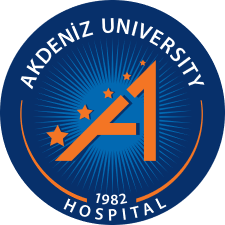EXAMINATION AREAS
Medical evaluations of adult Emergency Department patients (history taking, physical examination, examinations and treatments) are basically performed in 3 areas. A total of 49 stretchers are available in all areas.
1. Critical Care Area: It consists of the "Resuscitation Room", also called Reanimation, and the "Monitored Observation" area.
A:The resuscitation room has a capacity of 2 stretchers. It is a room where life-threatening patients and injured people are taken, where all kinds of life-saving interventions can be performed, and equipped with equipment to provide advanced airway management and circulatory support, including ultrasonography.
B: There are 13 stretchers in the Monitored Observation area. Patients admitted to this area can be constantly monitored and critical medical care and treatments can be administered to the patients.
2. Observation Area: This is the area where patients who apply as outpatients and whose clinical conditions do not require constant monitoring are taken. It consists of 19 stretchers in 5 rooms. In addition to these rooms, there are also some special examination and treatment areas in the observation area. These rooms are: Intervention Room, Ear Nose and Throat (ENT) and Eye Room, Psychiatric patient room, Negative Pressure Room, Ultrasonography and Gynecological Examination Room. There are a total of 5 stretchers in these rooms. While simple wound care and wound closure applications are performed in the intervention room, more detailed ENT intervention and eye examination with biomicroscope can be performed in the ENT chair in the ENT and Eye room. There is also an ultrasonography device used for this area in the negative pressure room.
3. Orange Area: This area was used for the care and treatment of patients with suspected COVID-19 during the pandemic period. It is now used as a Fast Track Unit during busy hours of the day or as an area where the follow-up and treatment of patients who cannot be hospitalized due to lack of space is carried out. It has a total capacity of 10 stretchers, 4 of which have monitors.
In addition to the areas where medical care is provided in the Adult Emergency Service, there is a waiting room, triage, reception secretariat, police/gendarmerie room, plaster-splint preparation room, warehouse, staff rooms (physicians locker room, nurses locker room), library, and radiology direct radiography rooms. The computed tomography (CT), magnetic resonance imaging (MRI) and consultative ultrasonography unit is located on the upper floor, accessible via a separate elevator from the emergency room. There is no laboratory unit in the emergency department, and all tests are carried out in the Emergency Test Devices in the Central Laboratory, where they are sent via a pneumatic system.
NUMBER OF DOCTORS ON DUTY
9 faculty members, including 8 Professors and 1 Physician Lecturer, carry out health services, education and research., 9 faculty members, including 8 Professors and 1 Physician Lecturer, carry out health services, education and research at Akdeniz University Faculty of Medicine, Department of Emergency Medicine. Although the number of medical specialty students (research assistant physicians) in the Department varies from time to time, it is generally around 40-45 physicians. Faculty members provide active service in the Emergency Department in 2 shifts during the week (08:00-17:00 and 17:00-24:00) and 1 shift on the weekend (14:00-24:00). Outside these hours, on-call duty is kept. Research assistant physicians work in 2 shifts (08:00-18:00 and 18:00-08:00). Nurses, paramedics and radiology technicians serve 24/7 as medical personnel in the Emergency Department. Auxiliary staff and cleaning staff work uninterruptedly to ensure continuity in the operation of the emergency service.
MEDICAL EXPERTICE AREA (Diagnosis-Treatments, Services,Information About Surgeries)
A total of 118,100 adult patients and pediatric trauma patients were admitted to Akdeniz University Hospital Adult Emergency Service in 2023. The average hospitalization rate was 15%.
20-25% of the patients applying are due to trauma, depending on the winter and summer months. Since it is a tertiary hospital, patient referrals are received from nearly 50 hospitals both in Antalya and the surrounding and multisytemic disorders provinces and districts. The large number of referred patients, especially intensive care patients,shows that the Emergency Department is the most qualified unit in emergency healthcare in the Western Mediterranean Region. All patients applying to the emergency department are evaluated by nurses in the Emergency Department Triage Area, classified according to the urgency of their illness, and taken to the appropriate department. While patients who require close monitoring and treatment and have complaints such as heart disease and respiratory distress are evaluated in the monitored area, other patients who do not require close monitoring and are in triage category 3 or above are evaluated in outpatient care areas. Patients who apply to the emergency department and are in triage category 1 are immediately taken into the emergency room, while the average waiting time for patients in triage category 2 is less than 5 minutes. Patients with triage category 1 who apply to the emergency department are immediately taken into the emergency room, and the average waiting time for patients with triage category 2 is less than 5 minutes. Patients who apply during crowded hours and who are in triage category 3 or above and who do not have life-threatening complaints may have to wait, as in all countries where advanced emergency medicine services are
Son güncelleme : 14.06.2024 13:51:03
